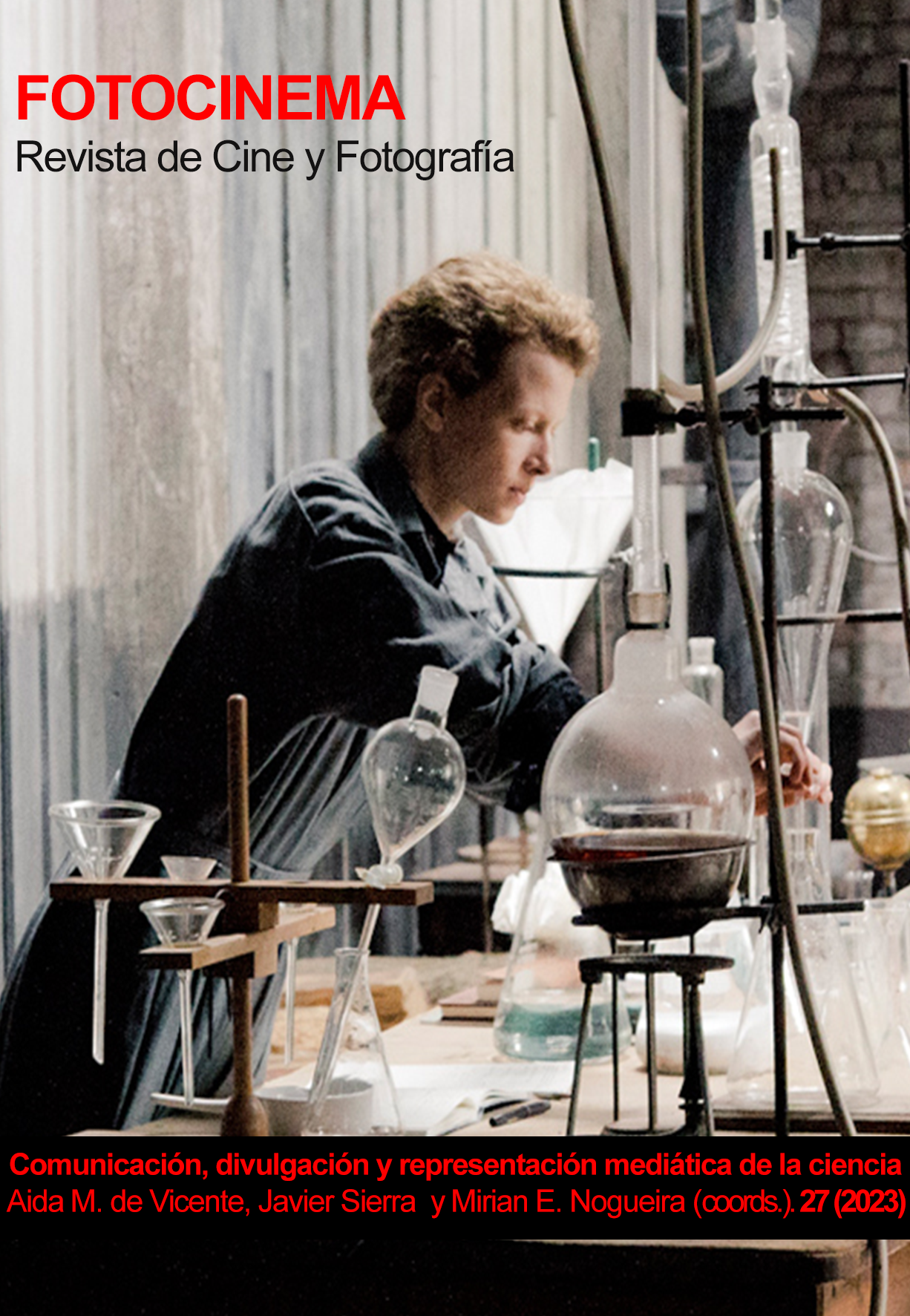El efecto Polaroid
Las virtudes de la demora en Better Call Saul
DOI:
https://doi.org/10.24310/Fotocinema.2023.vi27.16565Palabras clave:
Ficción seriada, modelos narrativos audiovisuales, análisis textual, Better Call SaulResumen
Este artículo propone un modelo descriptivo que contempla la enorme diversidad que la teleficción contemporánea como un continuum que se abre entre el polo del modelo narrativo dominante caracterizado por el orden (cuyo ejemplo categórico sería 24 -Joel Surnow y Robert Cochran, 2001-2010) y su antípoda de entropía y desorden (cuyo paradigma sería Twin Peaks: The Return -David Lynch y Marc Frost, 2017). A partir de ahí, centran el foco en Better Call Saul (Vince Gilligan y Peter Gould, 2015-2022), teleserie que, situada en una posición de equidistancia, combina procedimientos de ambos formatos discursivos con resultados dignos de un estudio pormenorizado que estas páginas acometen.
Descargas
Métricas
Publicación Facts
Perfil de revisores N/D
Información adicional autores
Indexado: {$indexList}
-
Indexado en
- Sociedad Académica/Grupo
- N/D
- Editora:
- Universidad de Málaga
Citas
Auerbach, D. (2013). The Cosmology of Serialized Television. The American Reader. https://theamericanreader.com/the-cosmology-of-serialized-television/
Brown, D. W. R. (2019). Dreading the future: Narrative dread in Better Call Saul and contemporary television. NECSUS. European Journal of Media Studies, 8, 231–248. https://doi.org/10.25969/mediarep/4175
Calabrese, O. (1999). Lezioni di semisimbolico. Come la semiotica analizza l'opera d'arte. Protagon.
Genette, G. (1989). Figuras III. Lumen.
Iturregui, V. (2021). El retorno al hogar de los fantasmas. David Lynch y la reimaginación del clasicismo hollywoodiense [Tesis doctoral no publicada]. Universidad del País Vasco. http://hdl.handle.net/10810/55193
Jones, K. (2016). The Marginalization of Cinema. Film Comment, noviembre-diciembre. https://www.filmcomment.com/blog/film-comment-podcast-marginalization-cinema/
Martin, A. (2018). El reto de la narrativa. Caimán Cuadernos de cine, 20(121), 48-54.
Quintana, A. (2016, 7 de junio). On és la posada en escena? El Punt Avui. https://www.elpuntavui.cat/cultura/article/974456-on-es-la-posada-en-.html
Quintana, A. (2017). El triunfo del guion frente a la puesta en escena. Caimán Cuadernos de Cine, 59(110), 14-16.
Zunzunegui, S. (2016). La mirada cercana. Microanálisis fílmico (Edición revisada y ampliada). Shangrila.
Publicado
Cómo citar
Número
Sección
Licencia
Todos los contenidos publicados en Fotocinema. Revista científica de cine y fotografía están sujetos a la licencia Creative Commons Reconocimento-NoComercia-Compartirigual 4.0 cuyo texto completo puede consultar en <http://creativecommons.org/licenses/by-nc-sa/4.0>
Se pueden copiar, usar, difundir, transmitir y exponer públicamente, siempre que:
- Se cite la autoría y la fuente original de su publicación (revista, editorial y URL de la obra).
- No se usen para fines comerciales.
- Se mencione la existencia y especificaciones de esta licencia de uso.
Los derechos de autor son de dos clases: morales y patrimoniales. Los derechos morales son prerrogativas perpetuas, irrenunciables, intransferibles, inalienables, inembargables e imprescriptibles. De acuerdo con la legislación de derechos de autor, Fotocinema. Revista científica de cine y fotografía reconoce y respeta el derecho moral de los autores/as, así como la titularidad del derecho patrimonial, el cual será cedido a la Universidad de Málaga para su difusión en acceso abierto. Los derechos patrimoniales, se refieren a los beneficios que se obtienen por el uso o divulgación de las obras. Fotocinema. Revista científica de cine y fotografía se publica en open access y queda autorizada en exclusiva para realizar u autorizar por cualquier medio el uso, distribución, divulgación, reproducción, adaptación, traducción o transformación de la obra.
Es responsabilidad de los autores/as obtener los permisos necesarios de las imágenes que están sujetas a derechos de autor.















13.png)



